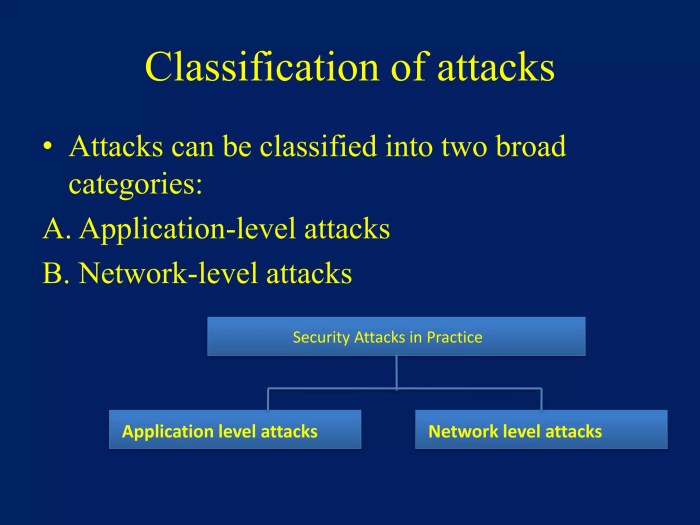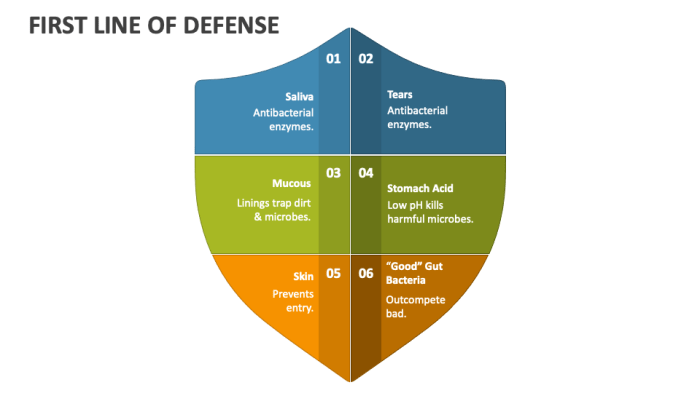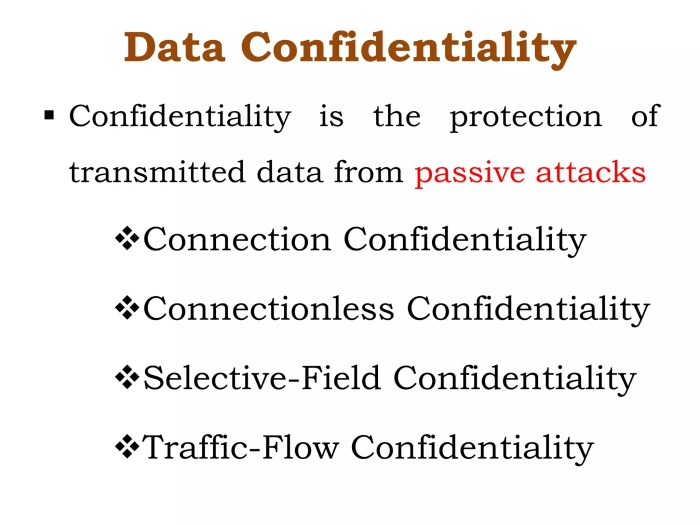Server Encryption: A Beginner’s Guide unveils the mysteries of securing your data. This guide demystifies the process, taking you from basic concepts to practical implementation. We’ll explore different encryption types, key management strategies, and compliance considerations, equipping you with the knowledge to protect your sensitive information effectively. Whether you’re a novice or simply seeking a refresher, this comprehensive resource provides clear explanations and practical examples to bolster your understanding.
We’ll cover the fundamentals of server-side encryption, including symmetric and asymmetric encryption methods like AES and RSA. You’ll learn the critical distinctions between encryption at rest and in transit, understand key management best practices, and navigate the complexities of compliance regulations like HIPAA and GDPR. We’ll also provide step-by-step guidance on implementing server encryption, troubleshooting common issues, and avoiding potential security pitfalls.
Introduction to Server Encryption
Server-side encryption is a crucial security measure that protects data stored on a server. It involves encrypting data before it’s saved to the server, ensuring that only authorized individuals with the correct decryption key can access it. This contrasts with client-side encryption, where the data is encrypted before it’s sent to the server. The key difference lies in
where* the encryption process takes place and who controls the encryption keys.
Think of it like this: imagine you have a valuable jewelry box. Client-side encryption is like locking the box yourself with your own personal key before giving it to someone else for safekeeping. Server-side encryption is like giving the box to a trusted vault, and the vault’s staff locks it away using their own secure system and key. You still own the jewelry, but the vault ensures its security while it’s in their possession.
Real-World Applications of Server Encryption
Server-side encryption is widely used across various industries and applications to protect sensitive information. For example, cloud storage providers like Amazon S3, Google Cloud Storage, and Microsoft Azure utilize server-side encryption to protect user data. Email providers also employ server-side encryption to secure email messages at rest, preventing unauthorized access to the content. Furthermore, many financial institutions use server-side encryption to protect sensitive customer data, such as account numbers and transaction details, stored on their servers.
The use of server-side encryption is becoming increasingly prevalent due to growing concerns about data breaches and the need to comply with data privacy regulations like GDPR and CCPA. In essence, any application that stores sensitive data on a server benefits significantly from this security measure.
Types of Server Encryption

Server encryption employs different methods to protect data at rest and in transit. Understanding these methods is crucial for selecting the appropriate security strategy for your server environment. The primary distinction lies between symmetric and asymmetric encryption, each with its own advantages and disadvantages.
Symmetric and Asymmetric Encryption
Symmetric encryption uses the same secret key to encrypt and decrypt data. This means both the sender and receiver need to possess the identical key. Think of it like a shared secret code. Asymmetric encryption, conversely, employs a pair of keys: a public key for encryption and a private key for decryption. The public key can be widely distributed, while the private key must remain strictly confidential.
This is analogous to a mailbox with a publicly accessible slot (public key) for receiving mail and a private key (the house key) to access the received mail.
Comparison of Encryption Algorithms
Several algorithms are used for both symmetric and asymmetric encryption, each offering different levels of security and performance. The choice depends on the specific security requirements and computational resources available.
| Algorithm | Key Size (bits) | Speed | Security Level |
|---|---|---|---|
| AES (Advanced Encryption Standard) | 128, 192, 256 | Fast | High |
| RSA (Rivest-Shamir-Adleman) | 1024, 2048, 4096 | Slow | High (depends on key size) |
| ChaCha20 | 256 | Fast | High |
| ECC (Elliptic Curve Cryptography) | 256, 384, 521 | Relatively Fast | High (achieves similar security to RSA with smaller key sizes) |
Strengths and Weaknesses of Symmetric Encryption
Symmetric encryption algorithms, like AES and ChaCha20, are generally faster than asymmetric algorithms. This makes them ideal for encrypting large amounts of data. However, the secure exchange of the shared secret key presents a significant challenge. If the key is intercepted, the entire encryption scheme is compromised. For example, a compromised key in a file encryption system could lead to data breaches.
Strengths and Weaknesses of Asymmetric Encryption
Asymmetric encryption, using algorithms such as RSA and ECC, solves the key exchange problem by using a public key. This eliminates the need for a secure channel to share the secret key. However, asymmetric encryption is computationally more expensive and slower than symmetric encryption, making it less suitable for encrypting large datasets. The security of RSA, for example, is heavily reliant on the difficulty of factoring large numbers; advancements in computing power could potentially compromise its security in the future, although key sizes are adjusted to mitigate this risk.
ECC offers comparable security levels to RSA but with smaller key sizes, resulting in faster performance.
Encryption at Rest vs. Encryption in Transit
Protecting your data is paramount in today’s digital landscape. This involves securing data both while it’s stored (at rest) and while it’s moving between systems (in transit). Understanding the differences between encryption at rest and encryption in transit, and their respective importance, is crucial for building a robust security posture.Encryption at rest and encryption in transit are two distinct but equally important security measures.
They address different vulnerabilities and require different approaches to implementation. Failing to implement either leaves your data vulnerable to attack, potentially leading to significant financial and reputational damage.
Encryption at Rest
Encryption at rest protects data while it’s stored on a server, database, or storage device. This is crucial because even seemingly secure systems can be compromised through physical access, malware infections, or insider threats. Robust encryption at rest ensures that even if an attacker gains access to the storage medium, the data remains unreadable without the correct decryption key.
Examples include encrypting databases, backups, and files stored on cloud storage services. The encryption process transforms the data into an unreadable format, making it inaccessible to unauthorized individuals. Decription is only possible with the correct cryptographic key.
Encryption in Transit
Encryption in transit protects data as it travels across a network, such as the internet. This is essential to prevent eavesdropping and man-in-the-middle attacks where malicious actors intercept data while it’s being transmitted. Common protocols like HTTPS (for web traffic) and SFTP (for file transfers) utilize encryption in transit to secure data communication. This ensures confidentiality and integrity of data during transmission, preventing unauthorized access and modification.
For instance, sensitive customer information transmitted during an online purchase is protected by encryption in transit.
Illustrative Diagram: Encryption at Rest vs. Encryption in Transit, Server Encryption: A Beginner’s Guide
Imagine a diagram with two distinct sections. Section 1: Encryption at Rest depicts a server hard drive. The hard drive is encased in a strong lock, representing the encryption process. Inside the hard drive are files represented by documents. These documents are visually obscured or scrambled, symbolizing the encrypted data.
A keyhole on the lock represents the decryption key required to access the files. A label on the hard drive indicates “Encrypted Data at Rest”. Section 2: Encryption in Transit shows two computers (Computer A and Computer B) connected by a network cable. The cable is wrapped in a protective shield, signifying the encryption process during transmission. Data packets are depicted as small, sealed envelopes traveling along the cable between Computer A and Computer B.
The envelopes represent the encrypted data being transmitted. A small key icon near the cable illustrates the cryptographic key used for encryption and decryption. A label on the cable reads “Encrypted Data in Transit”. The diagram clearly illustrates that data at rest is secured within storage, while data in transit is secured during its transmission between systems.
This visual representation effectively highlights the distinct nature and importance of both encryption methods.
Key Management and Security
Effective key management is paramount to the success of server encryption. Without robust key management practices, even the strongest encryption algorithms can be rendered useless, leaving sensitive data vulnerable to unauthorized access. The security of your encrypted data is only as strong as the security of the keys used to protect it. This section will explore the critical aspects of key management, outlining various techniques and highlighting potential vulnerabilities.
Key management encompasses the entire lifecycle of cryptographic keys, from their generation and storage to their use, rotation, and eventual destruction. This involves establishing clear policies, implementing secure procedures, and utilizing appropriate technologies to ensure the confidentiality, integrity, and availability of encryption keys. Failure at any stage of this lifecycle can compromise the security of your encrypted data.
Key Management Techniques
Successful key management requires a multifaceted approach. Several techniques are commonly employed to ensure the security and integrity of encryption keys. These include the use of Hardware Security Modules (HSMs), Key Management Systems (KMS), and robust key rotation policies.
Understanding server encryption is crucial for beginners navigating the complexities of data protection. This foundational knowledge lays the groundwork for grasping more advanced concepts, as explored in Decoding the Future of Server Security with Cryptography , which delves into cutting-edge cryptographic techniques. Ultimately, mastering server encryption empowers you to build robust and secure systems.
Hardware Security Modules (HSMs) are physical devices designed to securely store and manage cryptographic keys. They provide a tamper-resistant environment, protecting keys from unauthorized access even if the server itself is compromised. HSMs typically offer features such as key generation, encryption, decryption, digital signing, and key attestation. This high level of security makes them a preferred choice for protecting highly sensitive data.
Key Management Systems (KMS) are software solutions that provide centralized management of cryptographic keys. They offer functionalities such as key generation, storage, rotation, and access control. KMS solutions often integrate with cloud platforms and other infrastructure components, simplifying key management in complex environments. Cloud providers, for example, typically offer their own managed KMS services.
Regular key rotation is a crucial security practice. By periodically changing encryption keys, the impact of a potential key compromise is minimized. A strong key rotation policy should define the frequency of key changes and procedures for securely managing the transition between old and new keys. For example, a company might rotate its database encryption keys every 90 days, ensuring that even if a key is compromised, the attacker only has access to a limited amount of data.
Key Management Vulnerabilities
Despite the implementation of robust key management techniques, several vulnerabilities can still compromise the security of encryption keys. These vulnerabilities often stem from human error, weak security practices, or flaws in the key management system itself.
One significant vulnerability is the risk of insider threats. Employees with access to encryption keys could potentially misuse or steal them. Strong access control measures, including multi-factor authentication and least privilege principles, are essential to mitigate this risk. Regular security audits and employee training can further strengthen the security posture.
Another vulnerability is the potential for key compromise due to software vulnerabilities or malware. Regular patching of software systems and the implementation of robust security measures, such as intrusion detection and prevention systems, are crucial in preventing such attacks. A well-designed system architecture, separating key management components from other sensitive systems, can also enhance security.
Finally, inadequate key rotation practices can leave organizations vulnerable. Failing to rotate keys regularly increases the window of opportunity for attackers to exploit a compromised key. A clear and well-documented key rotation policy, coupled with automated processes, is essential to minimize this risk. Failing to follow established procedures during key rotation can also introduce vulnerabilities.
Implementing Server Encryption
Implementing server-side encryption involves configuring your server or cloud service to encrypt data at rest or in transit. This process varies depending on your infrastructure and chosen encryption method, but the core principles remain consistent: secure key management and proper configuration. This section provides a practical guide using AWS S3 as an example, alongside best practices and common challenges.
Server-Side Encryption with AWS S3
AWS S3 (Amazon Simple Storage Service) offers several server-side encryption options. We’ll focus on using Server-Side Encryption with AWS KMS (SSE-KMS), which uses AWS’s Key Management Service to manage encryption keys. This approach offers strong security and granular control.
- Create an AWS KMS Customer Managed Key (CMK): Navigate to the AWS KMS console. Create a new CMK, specifying appropriate aliases and permissions. Restrict access to this key using IAM roles to only the necessary S3 buckets and users. Consider enabling key rotation for enhanced security.
- Configure S3 Bucket Encryption: Go to your S3 bucket properties. Under the “Encryption” section, select “Server-side encryption” and choose “AWS KMS” as the encryption method. Specify the CMK you created in the previous step. Ensure that the encryption is applied to both existing and new objects. You can achieve this by enabling encryption at the bucket level.
- Verify Encryption: Upload a test file to your bucket. Check the bucket’s properties and the object’s metadata to confirm that encryption is active and using your specified CMK. AWS provides tools and APIs to verify the encryption status of your data.
- Implement Data Lifecycle Management: For long-term data retention or archiving, consider using S3 lifecycle policies in conjunction with your encryption settings. This ensures that data remains encrypted throughout its lifecycle, even when moved to different storage classes.
Securing Encryption Keys
Secure key management is paramount for effective server-side encryption. Compromised keys render encryption useless.
- Use a Key Management Service (KMS): A KMS like AWS KMS, Azure Key Vault, or Google Cloud KMS provides robust key management features, including key rotation, access control, and auditing. Avoid storing keys directly on your servers.
- Implement Strong Access Control: Restrict access to encryption keys using the principle of least privilege. Only authorized personnel and services should have access to the keys. Use IAM roles or similar mechanisms to manage permissions granularly.
- Regular Key Rotation: Regularly rotate your encryption keys to mitigate the risk of long-term key compromise. A schedule should be implemented and adhered to, balancing security with operational overhead.
- Hardware Security Modules (HSMs): For enhanced security, consider using HSMs to store and manage your encryption keys. HSMs provide a physically secure environment for key storage, minimizing the risk of theft or unauthorized access.
Common Challenges and Solutions
Implementing server-side encryption often presents challenges.
- Performance Overhead: Encryption and decryption processes introduce some performance overhead. Solutions include using hardware-accelerated encryption, optimizing encryption algorithms, and choosing appropriate key sizes to balance security and performance.
- Integration Complexity: Integrating encryption into existing systems can be complex, especially with legacy applications. Solutions involve careful planning, phased implementation, and leveraging tools that simplify the integration process. Consider using managed services that handle much of the underlying complexity.
- Key Management Complexity: Managing encryption keys securely can be challenging. Solutions include using a dedicated KMS, implementing robust access control mechanisms, and employing automated key rotation processes.
- Cost Considerations: Encryption services and KMS often incur additional costs. Solutions involve carefully evaluating the different options available, comparing pricing models, and optimizing resource usage to minimize expenses while maintaining a suitable security posture.
Server Encryption and Compliance
Server encryption is not merely a technical safeguard; it’s a crucial component of meeting various industry regulations and standards designed to protect sensitive data. Failing to implement adequate server encryption can lead to significant legal and financial repercussions, including hefty fines and reputational damage. This section explores the relationship between server encryption and compliance, highlighting key regulations and demonstrating how appropriate encryption methods can ensure adherence to legal requirements.
Relevant Regulations and Standards
Numerous regulations and standards mandate the use of encryption to protect sensitive data. Compliance hinges on understanding and implementing the specific requirements of each applicable regulation. Failure to do so can result in severe penalties. Key examples include the Health Insurance Portability and Accountability Act (HIPAA) in the United States, the General Data Protection Regulation (GDPR) in the European Union, and the Payment Card Industry Data Security Standard (PCI DSS) for organizations handling credit card information.
These regulations often specify minimum encryption strengths and key management practices.
HIPAA Compliance and Server Encryption
The Health Insurance Portability and Accountability Act (HIPAA) requires organizations handling Protected Health Information (PHI) to implement appropriate safeguards, including encryption, to protect the confidentiality, integrity, and availability of this data. HIPAA’s Security Rule Artikels specific technical safeguards, emphasizing the importance of encryption both at rest (data stored on servers) and in transit (data transmitted over networks). Compliance necessitates choosing encryption algorithms and key management practices aligned with HIPAA’s security standards, often involving strong encryption like AES-256.
Failure to comply can result in substantial fines and reputational damage. For instance, a healthcare provider failing to encrypt PHI stored on their servers could face significant penalties if a data breach occurs.
GDPR Compliance and Server Encryption
The General Data Protection Regulation (GDPR) focuses on the protection of personal data within the European Union. While GDPR doesn’t explicitly mandate specific encryption algorithms, it emphasizes the principle of data minimization and the implementation of appropriate technical and organizational measures to ensure the security of personal data. Encryption plays a vital role in meeting these requirements, particularly in protecting data both at rest and in transit.
GDPR’s focus on data protection necessitates a comprehensive approach to encryption, including robust key management and data loss prevention strategies. Non-compliance can lead to significant fines, potentially reaching millions of euros, depending on the severity of the breach and the volume of affected data. Consider a scenario where a European company storing customer data on unencrypted servers experiences a data breach; the fines under GDPR could be substantial.
Choosing Appropriate Encryption Methods for Compliance
Selecting the appropriate encryption method depends heavily on the specific regulatory requirements and the sensitivity of the data being protected. Factors to consider include the type of data, the level of risk, and the applicable regulations. For example, data subject to HIPAA might require AES-256 encryption, while data subject to PCI DSS might necessitate specific key management practices and encryption algorithms as defined by the standard.
It is crucial to conduct a thorough risk assessment to determine the appropriate level of security and select encryption methods that adequately address identified risks. Furthermore, regularly reviewing and updating encryption methods is essential to maintain compliance with evolving standards and address emerging threats. For instance, an organization might initially use AES-128, but later upgrade to AES-256 to meet stricter regulatory requirements or address new security vulnerabilities.
Troubleshooting Common Issues: Server Encryption: A Beginner’s Guide
Server encryption, while offering robust security, can present challenges during setup and operation. Understanding common problems and their solutions is crucial for maintaining data integrity and system availability. This section provides a troubleshooting guide to help you identify and resolve issues efficiently. We’ll examine potential causes of encryption failures and offer practical solutions, focusing on common scenarios encountered by administrators.
Encryption Key Management Problems
Proper key management is paramount for successful server encryption. Mismanagement can lead to data inaccessibility or security breaches. The following table Artikels common key management issues, their causes, and solutions.
| Problem | Cause | Solution | Notes |
|---|---|---|---|
| Inability to decrypt data | Lost or corrupted encryption key | Restore the key from a backup. If no backup exists, data recovery may be impossible. Consider implementing key rotation and multiple key backups. | Regular key backups are critical. Implement a robust key management system. |
| Slow encryption/decryption speeds | Weak encryption algorithm or insufficient hardware resources | Upgrade to a faster encryption algorithm (e.g., AES-256) and/or increase server resources (CPU, RAM). | Performance testing can help identify bottlenecks. Consider using hardware-accelerated encryption if available. |
| Key compromise | Weak key generation practices or insecure key storage | Implement strong key generation practices, use hardware security modules (HSMs) for key storage, and regularly rotate keys. | Regular security audits are crucial to identify and address vulnerabilities. |
Configuration Errors
Incorrect configuration settings are a frequent source of encryption problems. These errors can range from simple typos to mismatched parameters.
| Problem | Cause | Solution | Notes |
|---|---|---|---|
| Encryption failure | Incorrect encryption algorithm or mode specified in configuration files | Review and correct the configuration files, ensuring the specified algorithm and mode are compatible with the encryption library and hardware. | Always double-check configuration files before applying changes. Use a configuration management tool for consistency. |
| Data corruption | Incorrectly configured cipher parameters or IV (Initialization Vector) | Verify the cipher parameters and IV are correctly configured according to the chosen encryption algorithm’s specifications. | Consult the documentation for the specific encryption library being used. |
| Access denied errors | Insufficient permissions for encryption/decryption operations | Grant appropriate permissions to the user or process performing encryption/decryption operations. | Properly manage user and group permissions for secure access control. |
Hardware or Software Failures
Underlying hardware or software issues can disrupt encryption processes. These can range from storage failures to driver problems.
| Problem | Cause | Solution | Notes |
|---|---|---|---|
| System crashes during encryption | Hardware failure (e.g., RAM, hard drive) or software bug | Diagnose and repair the hardware failure or update/replace the affected software. | Regular system maintenance and backups are crucial for mitigating this risk. |
| Intermittent encryption failures | Driver issues or resource conflicts | Update or reinstall drivers, and resolve resource conflicts. | Monitor system logs for error messages that may indicate driver or resource problems. |
| Data loss after encryption | Storage device failure | Restore data from backups. Consider using RAID or other redundancy mechanisms. | Regular backups are essential for data protection against storage failures. |
Ending Remarks
Mastering server encryption is crucial in today’s digital landscape. This guide has provided a foundational understanding of the various methods, best practices, and potential challenges involved. By understanding the different types of encryption, implementing robust key management, and adhering to relevant compliance standards, you can significantly enhance the security of your server and data. Remember, ongoing vigilance and adaptation are key to maintaining a strong security posture.
This knowledge empowers you to make informed decisions and proactively protect your valuable information.
Key Questions Answered
What is the difference between data encryption at rest and in transit?
Encryption at rest protects data stored on a server, while encryption in transit protects data while it’s being transmitted over a network.
How often should encryption keys be rotated?
The frequency of key rotation depends on several factors, including the sensitivity of the data and the organization’s security policies. Best practice suggests regular rotation, potentially every 90-180 days or even more frequently.
What happens if I lose my encryption key?
Losing your encryption key can render your data irretrievable. Robust key management practices, including backups and secure storage, are essential to prevent data loss.
Are there any open-source tools for server encryption?
Yes, several open-source tools are available for various encryption needs. The choice depends on your specific requirements and technical expertise.
Can server encryption completely prevent data breaches?
While server encryption significantly reduces the risk of data breaches, it’s not a foolproof solution. A layered security approach, including other security measures, is necessary for comprehensive protection.








